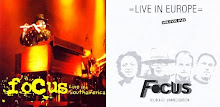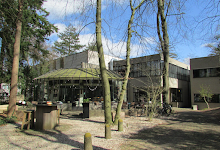Archive number: 44b
Title: Hamburger Concerto (Part 2 Rare)
Main Album: Hamburger Concerto
Track number: 5b
Genre: Progressive Rock Instrumental (Symphonic)
Studio: Olympic Studios 'B', 117 Church Road, Barnes, London SW13 9HL
Length: 3' 24” (20' 15” the whole)
Composer: Jan Akkerman
Musicians: Jan Akkerman – Electric Guitars (Fenders); Thijs van Leer – Hammond organ, Electric piano, Mellotron, Vibes, ARP Synthesiser; Bert Ruiter - Bass, autoharp, triangles, Chinese finger cymbals, Swiss bells; Colin Allen – Drums, percussion
Producer: Mike Vernon
Engineer: Bob Hall
Label: Polydor, Atco, EMI, Red Bullet, JVC, JVC Victor
Date of recording/release: January/March 1974; April 1974. CD – 1998, 2001, 2001, 2002, 2006
Notes: The piece carries on with the band in unison, alternating the 'rare' theme with the repeated riff (02:00-02:11; 02:12-02:22; 02:23-02:46; 02:47-02:59; 03:00-03:22; 03:23-03:34). Guitar and synthesiser led, the organ is more prominent on the second statement of the theme and extra percussion is heard the first and third time. In 03:35-04:21 we have the final statement of the theme, which now builds then takes off with a mellotron choir, a brief piano phrase and a rising synthesiser part, breaking only to, yet again, give the riff twice over (04:22-04:33). In the next section there is a slowing down as synthesisers, organ and mellotron meld with the vibes and percussion then the guitar with effects too (04:34-05:23) the section ending with the sound of the cymbals.
Note on the ARP 2600 (from Wikipedia)
Monophonic 49-key analogue subtractive audio synthesiser, designed by Alan R Pearlman and manufactured by his company 1971-1981. On initial release it was heavily marketed to educational facilities. Pearlman also provided synthesisers to famous musicians (eg Townshend, Stevie Wonder) for celebrity endorsements. Unlike other modular systems of the time, which required modules to be purchased individually and wired by the user, it was semi-modular with a fixed selection of basic synthesiser components internally pre-wired. Three basic versions were built. 1. "Blue Marvin" (after engineer Marvin Cohen) housed in a light blue/grey metal case, was assembled in a garage during ARP's infancy. 2. Later models were built in a vinyl covered wood case and contained an imitation of Bob Moog's infamous 4-pole "ladder" VCF (later subject of an infamous, threatened lawsuit). Mid-production grey models (the Van Leer era) featured many changes amongst themselves. Various panel lettering and circuitry changes provided at least three different grey panel models. 3. Later models had orange labels over a black aluminum panel. An ARP 2600 was used to create the voice of R2-D2 in the Star Wars movies.





















No comments:
Post a Comment